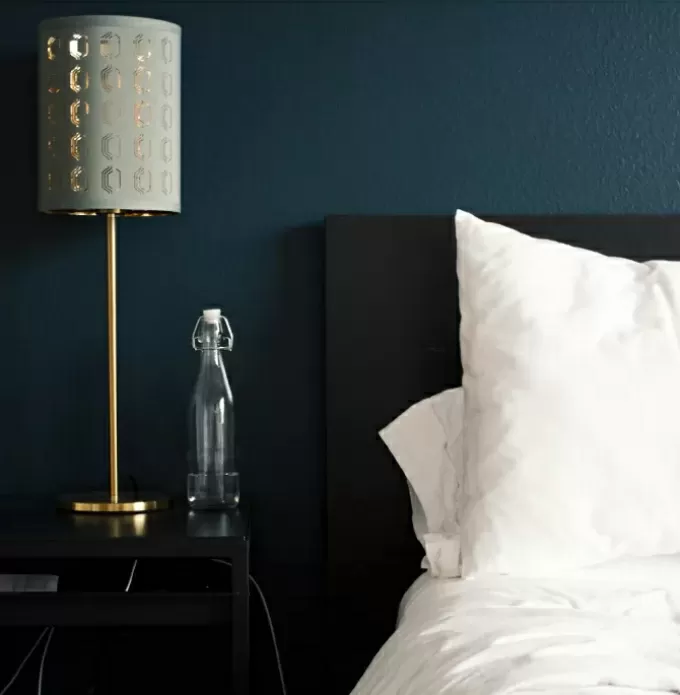Transform your WordPress site with stunning image analysis
Are you ready to elevate your WordPress website design‘s visual appeal? Dive into our insightful image analysis that breaks down an engaging design you’ll want to replicate.
Original design overview
This eye-catching design features a modern, asymmetrical layout that immediately captures attention. On the left, a bold text column highlights the main title, “For your dream holiday,” while the right side showcases a visually dynamic collage of images across two columns. With three rows in total-one for descriptive text and two for captivating visuals-this layout creates a unique focal point that invites exploration.
Key features and elements
Header and description
The inviting header adorned with star icons sets the stage for a vacation experience, followed by a clear descriptive paragraph that engages visitors.
Dynamic image blocks
Two visually distinct image sections provide a collage effect, showcasing vibrant drinks and a cozy recreational space, enticing potential guests to immerse themselves in the experience.
Interactive engagement
The prominent “view our location” button encourages users to take action, enhancing the interactive aspect of your WordPress website.
Typography and icons
The bold main title and easy-to-read descriptive text work harmoniously, while small star icons serve as a compelling rating indicator.
Unique design aspects
Striking aesthetics
The contrast between a dark background and bright content creates an immersive and luxurious feel, making visitors eager to explore further.
Potential for animation
While currently static, consider adding hover effects or animations to enhance interactivity and delight users.
Responsive and accessible
The layout adapts seamlessly for mobile viewing while maintaining strong text contrast for readability-a great starting point for accessibility considerations.
Visual hierarchy and usability
Modern luxurious style: This design speaks to an audience seeking a memorable vacation experience.
Effective use of white space: Strategic spacing separates content areas, improving overall readability and visual balance.
Why use this design?
This modern and engaging layout perfectly blends bold typography and dynamic visuals, drawing attention to your vacation offerings in an inviting manner. With its unique distribution of content and interactive elements, it not only enhances user experience but also invites your visitors to explore your accommodation services further.
Don’t miss the opportunity to transform your WordPress site! Implement these key elements to create a design that mesmerises your audience and drives results.
Ways to organise content in WordPress
Create categories
Organising content into categories simplifies navigation and helps visitors quickly find relevant information, enhancing the user experience. By using categories, you establish a clear hierarchy on your WordPress website, making it easy to manage numerous posts. This method is especially useful for blogs and news sites where organised content is crucial for usability. Each category should have a specific focus, ensuring content is grouped logically and is easy to locate both for users and search engines, ultimately boosting your SEO efforts.
Utilise tags
Tags provide another layer of organisation by allowing more specific classifications within categories. They are ideal for highlighting key topics, themes, or subjects across various posts. When used correctly, tags can significantly enhance the searchability of your content, allowing visitors to quickly locate posts related to their interests. They work in tandem with categories to refine your site’s content structure, improving overall free wordpress themes organisation and making your site more user-friendly.
Employ pages for static content
Pages are perfect for static content such as your ‘About’, ‘Contact’, or ‘Services’ sections. Unlike posts, pages aren’t sorted by date and remain accessible in a more permanent location. By employing pages, you ensure essential information is always easy to find, maintaining a coherent structure on your WordPress website. This distinction helps in clearly separating dynamic content from static information, aiding users in navigating seamlessly through your site.
Create custom post types
If your website requires content that doesn’t fit into standard post categories or pages, custom post types can be a valuable solution. These allow for the inclusion of varied content types like portfolios, testimonials, or products, keeping them distinct from regular blog posts. By using custom post types, you can tailor your site’s content architecture, ensuring it aligns perfectly with your specific needs and enhancing the overall usability of your wordpress website builder.
Implement custom taxonomies
Custom taxonomies allow you to organise complex content in a more meaningful and accessible way. By grouping similar custom post types, you can create a coherent content structure that reflects your site’s specific focus. This method helps in enhancing organisation and discoverability, making it easier for visitors to find related content. Custom taxonomies provide a versatile tool for managing and categorising varied content, aligning it with your Elementor Alternatives effectively.
Utilise menus effectively
Menus serve as the backbone of your website’s navigation strategy. By setting up a logical, user-friendly menu, you ensure visitors can move around your site with ease. Menus should be clear and concise, directing users to key sections without overwhelming them with options. A well-organised menu significantly improves WordPress website usability and helps users find what they need quickly and efficiently.
Incorporate widgets
Widgets add functionality and content features to your site’s sidebar or other widget-ready areas. By incorporating relevant widgets, you can enhance the user experience with customisable sections for recent posts, social media links, or advertisements. Strategically placing widgets can also drive engagement and increase the time visitors spend on your WordPress website.
Maximise the block editor
The block editor in WordPress provides a flexible framework to organise content efficiently. By utilising blocks, you can easily structure your pages with elements like paragraphs, images, columns, buttons, and more. This intuitive system offers versatility in design, allowing for a tailored layout that suits your specific needs, making content creation straightforward and efficient.
Use ‘Read More’ tags
Integrating ‘Read More’ tags allows for a streamlined homepage or archive pages by displaying only a portion of your post’s content with a clickable link to read the whole article. This technique helps in maintaining a neat and concise layout that captures visitor interest and encourages click-throughs, improving navigation and enhancing the WordPress website builder experience.
Archive old content appropriately
Archiving old content not only keeps your site clean but also improves search efficiency. By properly categorising and archiving older posts or pages, you maintain a structured repository of information. This strategy ensures visitors can always access valuable historical content without it interfering with fresh, current updates on your WordPress website.
Different types of content in WordPress
Blog posts
Blog posts form the backbone of many WordPress sites and typically consist of time-stamped articles arranged chronologically. They are ideal for sharing news, updates, opinions, and stories, fostering engagement through comments. Blog posts can be easily categorised and tagged, enhancing site organisation and making it easy for visitors to find relevant content, significantly boosting your WordPress website SEO.
Pages
Pages are utilized for static content that doesn’t change frequently, such as your ‘About Us’, ‘Contact’, or ‘Services’ page. Unlike posts, they aren’t arranged by date, making them perfect for timeless information that should always be accessible to users, providing a sturdy backbone to your wordpress website builder structure.
Portfolios
WordPress portfolios allow creators and companies to display their work samples, projects, and achievements effectively. This type of content caters to designers, photographers, and freelancers who want to showcase their previous accomplishments to potential clients. Using portfolios helps create a visual resume, enhancing credibility and engagement on your site.
Testimonials
Testimonials are vital for building trust and authenticity on your WordPress website. Incorporating client feedback or customer reviews showcases positive experiences, influencing potential clients’ decisions, and providing social proof of your expertise or product quality.
Product pages
For e-commerce sites, product pages are essential, detailing the specific offerings available. They include images, descriptions, pricing, and purchasing options, providing critical information to drive conversions. Well-crafted product pages not only attract but retain customer interest, making it easy for them to decide on a purchase.
Events
Event content helps publicise and manage information regarding upcoming gatherings, meetings, or conventions. Presenting event details, locations, timings, and registration instructions ensures potential attendees are well-informed and engaged, facilitating effective participation and increasing the interaction level on your WordPress website.
Galleries
Galleries are ideal for showing cohesive visual collections, such as images or videos, offering a more impactful and organised presentation. Utilising galleries enhances the aesthetic appeal and engagement level of your site, especially for creative professionals or businesses focused on visual content, aligning well with their WordPress website builder goals.
Forms
Forms are a versatile content type that facilitate user interaction on your site, enabling contact, feedback, surveys, or user registration. By integrating intuitive forms, you collect valuable user data and foster communication, enhancing customer service and engagement across your WordPress website.
Audio & Podcasts
Adding audio elements or podcasts enriches your content diversity, catering to audiences who prefer listening to content over reading. Podcasts allow for the dissemination of interviews, discussions, or storytelling, fostering broader engagement and drawing in a diversified audience for your WordPress site.
Videos
Integrate videos for a more dynamic and engaging content presentation, ideal for tutorials, vlogs, or promotional materials. Videos convey complex information effectively and can significantly boost the interaction rate on your WordPress website builder, providing an interactive experience to capture viewer interest.
Conclusion
By leveraging these dynamic design elements and organising your site’s content strategically, you transform your WordPress website design into a visually engaging and user-friendly experience. From impactful typography and tailored content forms to interactive elements and strategic organisation, each approach enhances visitor engagement and drives positive results. Explore the endless possibilities with custom designs and WordPress website layouts, ensuring your content captivates and inspires your audience.







